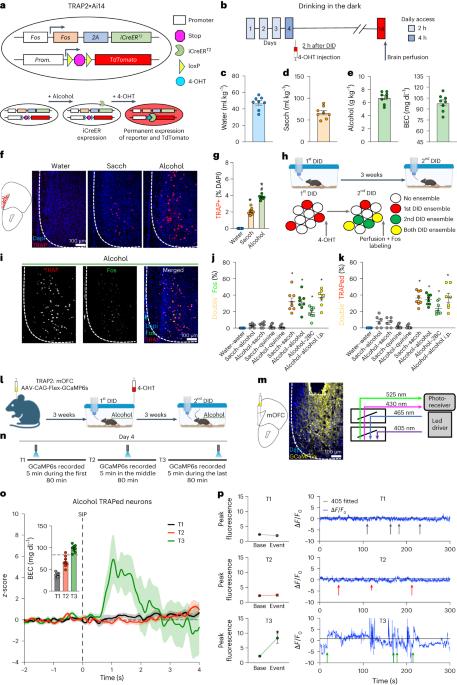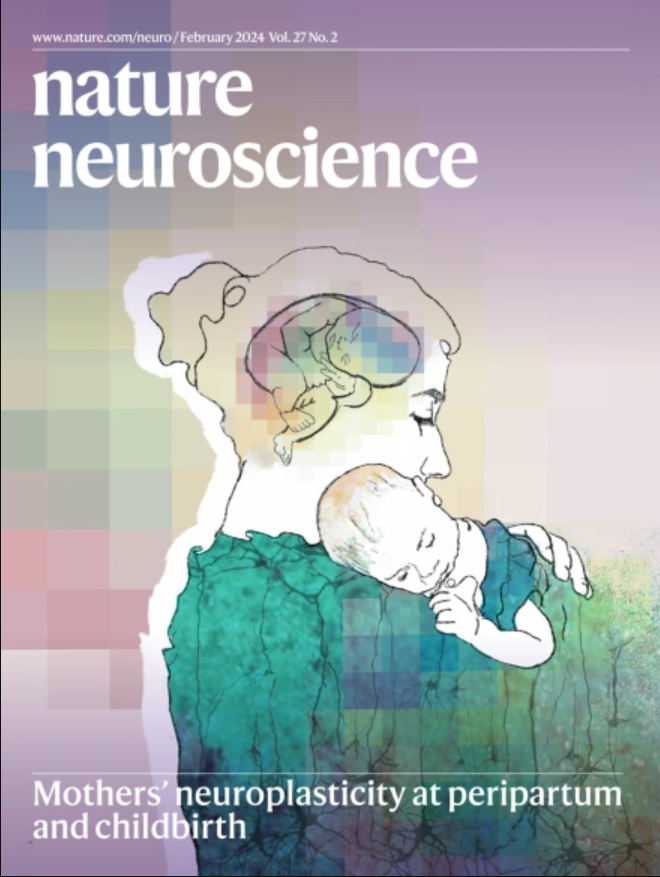小鼠内侧眶额叶皮质抑制神经元集合对酗酒的抑制
IF 20
1区 医学
Q1 NEUROSCIENCES
引用次数: 0
摘要
酒精消费仍然是一个重大的全球健康挑战,每年直接和间接造成数百万人死亡。酒精滥用导致前额叶皮层活动失调,但对特定前额叶回路的影响仍有待阐明。本研究中,我们在小鼠内侧眶额叶皮层(mOFC)中发现了一个离散的gaba能神经元集合,该神经元群选择性地参与了对酗酒的反应,并限制了进一步的饮酒行为。该人群的光遗传沉默或消融导致不受控制的酗酒。这种神经元集合是酒精所特有的,而不是其他有益物质所招募的。这个集合中的神经元广泛分布在整个大脑中,但专门针对丘脑中背侧的突起调节酗酒。总之,这些结果确定了mOFC中的一个脑回路,该回路通过减少酒精摄入量来防止酗酒,这可能为开发mOFC神经元集合干预措施提供了途径。本文章由计算机程序翻译,如有差异,请以英文原文为准。


Suppression of binge alcohol drinking by an inhibitory neuronal ensemble in the mouse medial orbitofrontal cortex
Alcohol consumption remains a significant global health challenge, directly and indirectly causing millions of deaths annually. Alcohol abuse causes dysregulated activity of the prefrontal cortex, yet effects on specific prefrontal circuits remain to be elucidated. Here, we identify a discrete GABAergic neuronal ensemble in the mouse medial orbitofrontal cortex (mOFC) that is selectively recruited in response to binge alcohol drinking and limits further drinking behavior. Optogenetic silencing of this population, or its ablation, results in uncontrolled binge alcohol consumption. This neuronal ensemble is specific to alcohol and is not recruited by other rewarding substances. Neurons in this ensemble project widely throughout the brain, but projections specifically to the mediodorsal thalamus regulate binge alcohol drinking. Together, these results identify a brain circuit in the mOFC that serves to protect against binge drinking by reducing alcohol intake, which may offer avenues for the development of mOFC neuronal ensemble-targeted interventions. This study demonstrates that high alcohol concentrations during binge drinking activate a small GABAergic neuronal ensemble in the medial orbitofrontal cortex, which subsequently reduces further alcohol consumption. This effect is mediated by the ensemble’s projections to the mediodorsal thalamus.
求助全文
通过发布文献求助,成功后即可免费获取论文全文。
去求助
来源期刊

Nature neuroscience
医学-神经科学
CiteScore
38.60
自引率
1.20%
发文量
212
审稿时长
1 months
期刊介绍:
Nature Neuroscience, a multidisciplinary journal, publishes papers of the utmost quality and significance across all realms of neuroscience. The editors welcome contributions spanning molecular, cellular, systems, and cognitive neuroscience, along with psychophysics, computational modeling, and nervous system disorders. While no area is off-limits, studies offering fundamental insights into nervous system function receive priority.
The journal offers high visibility to both readers and authors, fostering interdisciplinary communication and accessibility to a broad audience. It maintains high standards of copy editing and production, rigorous peer review, rapid publication, and operates independently from academic societies and other vested interests.
In addition to primary research, Nature Neuroscience features news and views, reviews, editorials, commentaries, perspectives, book reviews, and correspondence, aiming to serve as the voice of the global neuroscience community.
 求助内容:
求助内容: 应助结果提醒方式:
应助结果提醒方式:


